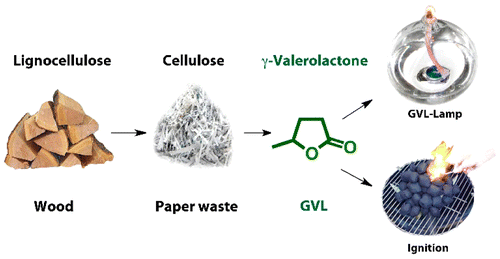Waste paper could make summer grilling more environmentally friendly

Summertime is waning, and that means the end of backyard barbecues is almost upon us. That also means an end to dousing charcoal briquettes with lighter fluid. Reducing the use of lighter fluid might not be a bad thing, as many of those products are made from crude oil and emit potentially harmful compounds when lit. Now, researchers report in ACS Sustainable Chemistry & Engineering that they developed a waste-paper-based, environmentally friendly and sustainable alternative.
Igniting fires has been a keystone to human civilization. Ancient communities used plant and animal fats for both illuminating the night and cooking their meals. For centuries, people have started fires with vegetable oils and lard. Other examples of long-used igniting fluids are kerosene and paraffin oil. Nowadays, people primarily use electricity for lighting and often pour on petroleum-based lighter fluids to start charcoal grills and wood fires. In an effort to move toward a more sustainable type of fluid, as well as to mitigate the potential harmful effects of currently available products, István T. Horváth and colleagues sought an alternative.
The researchers started with waste paper and newsprint and, through a multistep process, converted the materials into a compound called gamma-valerolactone (GVL). The team demonstrated that GVL can safely start charcoal grills and can light glass lamps without forming smoke or odors. They say that because GVL is renewable and nontoxic, it could someday be a sustainable, safer alternative fluid for lighting coals at neighborhood cookouts.
More information: Use of Gamma-Valerolactone as an Illuminating Liquid and Lighter Fluid, ACS Sustainable Chem. Eng., Article ASAP. DOI: 10.1021/acssuschemeng.5b00465
Abstract
The sulfuric acid-catalyzed conversion of paper wastes in gamma-valerolactone (GVL) or dioxane leads to the formation of levulinic acid (LA) and formic acid (FA), which can be converted to GVL by transfer-hydrogenation using the Shvo catalyst in situ or separately. The isolation of LA and FA was assisted by the neutralization of the sulfuric acid with ammonia to form a biphasic system. While the ammonium sulfate and most of FA and some of LA were in the aqueous phase, the organic solvent-rich phase contained most of the LA and some of the FA. GVL was used as an illuminating liquid in glass lamps for hours without the formation of noticeable smoke and/or odor even in a small room. While neat GVL can be used for the safe but somewhat slow lighting of charcoal, the ignition with different mixtures of GVL (95 or 90 vol %) and ethanol (5 or 10 vol %) was reduced to a convenient few seconds. Ignition tests of charcoal combined with emission analyses revealed that by increasing the ethanol content to 10 vol % the relative VOC emission can be decreased by 15% compared to the commercial lighter fluids.
Provided by American Chemical Society

















